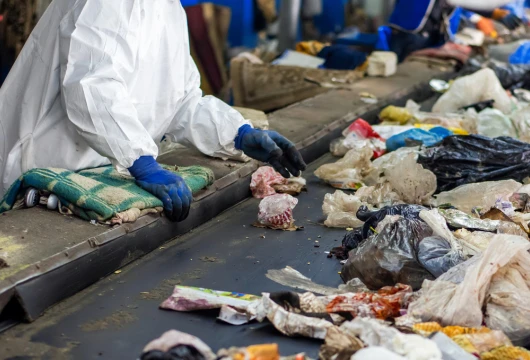Supreme Court Pushes MCD for Waste-to-Energy Solutions
On October 19, 2024, the Supreme Court directed the Municipal Corporation of Delhi (MCD) to provide an affidavit outlining the steps to address the city’s solid waste management issues. Delhi, one of the world’s most populous cities, faces a significant challenge in managing its daily waste, often resulting in landfill fires and environmental hazards. However, optimism is on the horizon as the city plans to expand its *waste-to-energy* (WTE) projects, which are seen as promising solutions for turning waste into power and reducing landfill dependence.
Delhi’s waste management system has long struggled with the sheer volume of daily waste. Still, with new waste-to-energy plants under construction, the city aims to tackle the issue head-on. These plants are expected to significantly reduce the city’s reliance on landfills and mitigate pollution caused by untreated waste.
A Glimpse at Delhi’s Waste Crisis
For years, the Ghazipur landfill has symbolized Delhi’s solid waste challenges. Towering like a mountain of refuse, it has caught fire multiple times due to the improper disposal of untreated waste. Such incidents contribute to the hazardous air quality in Delhi, particularly during the winter months when pollution levels are already high.
In July, the Supreme Court identified a “public health emergency” when it found that Delhi generates 3,800 tonnes per day (tpd) of waste, much of which goes untreated. This untreated waste, combined with industrial emissions, vehicular pollution, and crop stubble burning in nearby states, exacerbates Delhi’s already precarious air quality. Addressing this concern, the court urged the MCD to find sustainable solutions to tackle the shortfall in waste management capacity, which has now brought the conversation to waste-to-energy projects.
Boosting Delhi’s Waste-to-Energy Projects for a Cleaner Future
Delhi’s Municipal Corporation has responded to the Supreme Court’s directive with a renewed focus on expanding its *waste-to-energy* infrastructure. Senior advocate Menaka Guruswamy, representing the MCD, informed the bench led by Justice Abhay S Oka that the Lieutenant Governor (LG) had approved an essential proposal on October 14. This proposal empowers the MCD commissioner to execute projects that exceed ₹ five crore, ensuring faster decision-making and more efficient project implementation.
The city’s new waste-to-energy plants are set to play a pivotal role in managing the solid waste generated daily. Two flagship projects have already been announced: a 3,000 tpd WTE plant at Narela-Bawana and a 2,000 tpd WTE plant at Ghazipur. These plants aim to convert daily waste into usable energy, reducing landfill use and generating power for the city, all while reducing harmful emissions.
Once fully operational, these waste-to-energy plants are expected to address Delhi’s waste management shortfall by 2026. The city hopes to meet its current waste disposal requirements and avoid future challenges by generating more than enough energy to offset the 3,000 tonnes of untreated waste that has plagued it.
Waste-to-Energy: A Model for Sustainable Growth
The concept of *waste-to-energy* is not new, but its importance is increasingly recognized as urban centers like Delhi grapple with waste problems. Waste-to-energy plants use incineration or other processes to convert solid waste into energy through electricity or heat. This technology offers several benefits. First, it reduces the volume of waste in landfills, reducing the harmful methane emissions generated by decomposing garbage. Second, it provides a renewable energy source, helping cities like Delhi sustainably meet their growing energy needs.
In Delhi’s case, the waste-to-energy plants at Narela-Bawana and Ghazipur will produce significant quantities of energy while also addressing the city’s waste disposal shortfall. Once operational, the two plants alone are expected to reduce the city’s landfill dependency by 5,000 tonnes per day. The success of these projects could serve as a model for other cities in India facing similar challenges, especially those within the National Capital Region (NCR), where several towns also struggle with solid waste management.
Expanding Waste Management Solutions in the NCR
Delhi’s neighboring towns, including Gurugram, Faridabad, and Greater Noida, are also grappling with a shortfall in waste disposal. Figures presented to the Supreme Court by the Commission for Air Quality Management (CAQM) revealed that Gurugram has a shortfall of 946 tpd, Faridabad faces a deficit of 590 tpd, and Greater Noida is 198 tpd short. These figures underscore the need for comprehensive regional waste management strategies.
The Supreme Court has directed civic bodies in these cities to submit their responses and plans for addressing waste disposal gaps. Waste-to-energy projects will likely influence strategies employed in neighboring cities. By expanding waste-to-energy solutions beyond Delhi, the NCR region could make significant strides in improving overall air quality and mitigating the environmental impact of unmanaged waste.
A Cleaner Future with Waste-to-Energy
The Supreme Court’s directive to the MCD to outline its solid waste management steps, coupled with the LG’s recent approval of increased financial powers for the commissioner, signals a pivotal moment for Delhi’s future. The waste-to-energy projects at Narela-Bawana and Ghazipur are just beginning a more significant effort to transform how the city handles its waste.
By 2026, the daily shortfall of untreated waste could be a thing of the past, with Delhi not only keeping up with but staying ahead of its waste generation. The potential for job creation, energy generation, and a cleaner environment makes waste-to-energy solutions an exciting development for the capital city. As global cities increasingly seek sustainable urban solutions, Delhi’s waste-to-energy journey could offer a valuable blueprint for the future.
For more in-depth analysis and inspiring climate news, click here.

